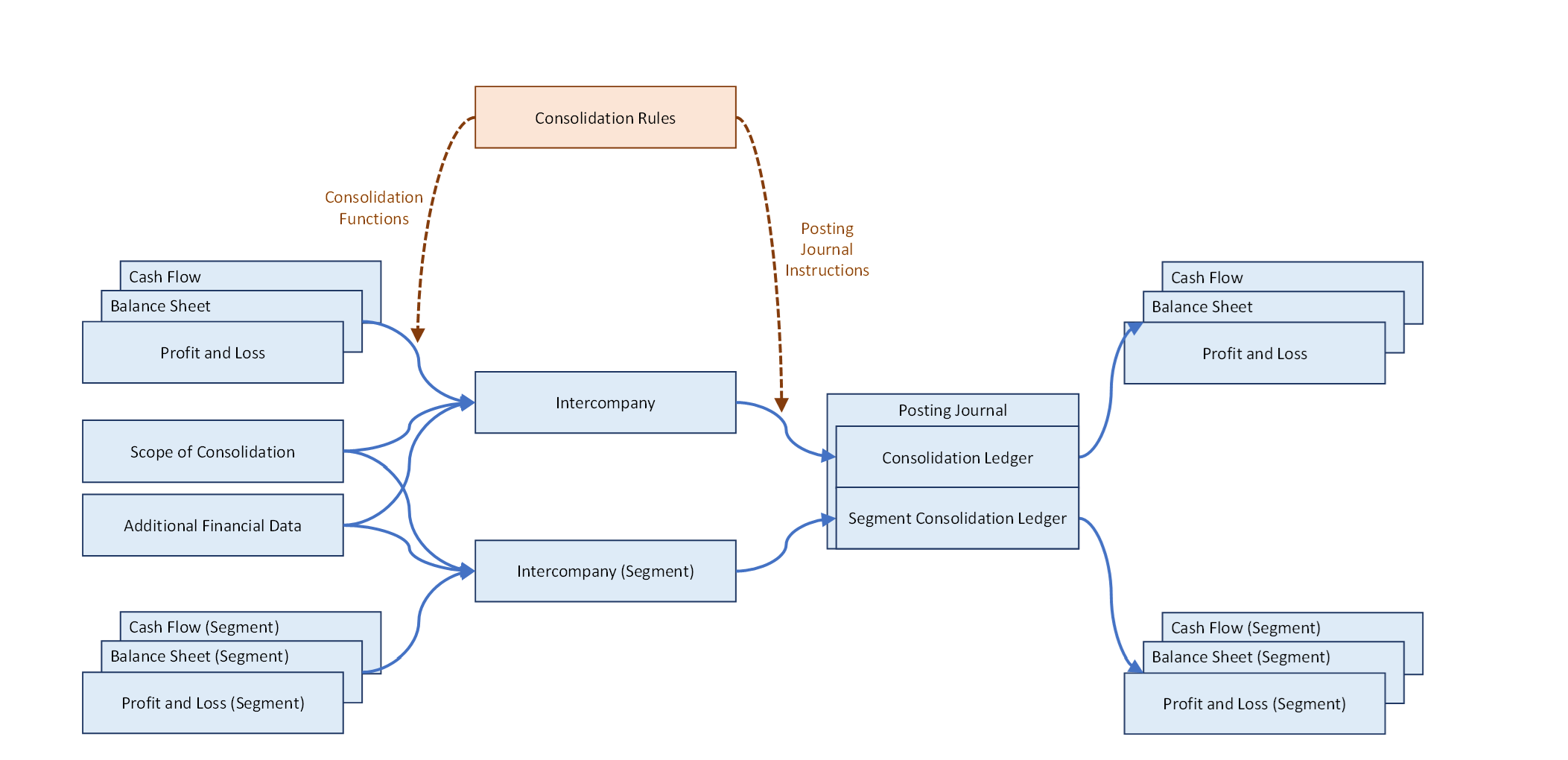Return to Financial Consolidation Model Overview.
The financial consolidation of a financial statement requires several consolidation measures to be applied on top of the combined financial statement. Each of these measures addresses the elimination of specific intercompany transactions. The consolidation measures are implemented through entries in the posting journal, which can be manual or automated.
The Financial Consolidation model features the Consolidation Engine, which carries out consolidation measures by creating automated journal entries. The consolidation engine is configured by consolidation rules (each rule corresponds to a specific consolidation measure, and all the rules are organized in consolidation measure groups.) Each consolidation measure group is represented by one single uppercase letter and a user-friendly name. By default, the Financial Consolidation model comes with the following consolidation measure group, according to industry standards:
-
C - Capital Consolidation
-
D - Debt Consolidation
-
I - Elimination of Unrealized Profit on Inventory
-
S - Expenses and Income Consolidation
-
M - Manual Consolidation Bookings
In addition to structuring the consolidation rules, the consolidation measure groups serve another critical purpose. They are specifically utilized for duplicating capital consolidation journal entries from the preceding reporting period, as detailed in the "Subsequent Capital Consolidation" section of the Financial Consolidation Procedure article. This pertains specifically to journal entries within the C - Capital Consolidation group. Besides this, the consolidation rules are completely self-contained, which means the entire behavior depends only on the configuration of the consolidation rules.
Data Flow
The consolidation rules are executed during the Consolidation Procedure. Each consolidation rule consists of multiple consolidation rule lines that use consolidation functions to query data from various database cubes. These may also be used in subsequent consolidation rule lines, allowing sophisticated data transformations.
The resulting figures are transformed according to posting journal instructions into an automated journal entry which is posted to the posting journal and affect the consolidated financial statements in the cubes.
The granularity of this processing contains the version, period, scope, and ledger for which the consolidation procedure is executed in combination with pairs of a reporting entity and a partner entity that are involved in the intercompany transaction. In other words, each intercompany transaction between a pair of entities results in one automated journal entry.
The consolidation rules contain filters to control irrelevant data that is processed into unwanted journal entries. These filters represent specific conditions that must be satisfied during processing. Failure to meet any filter condition results in the suppression of the data, preventing its continuation in the processing pipeline and the subsequent generation of automated journal entries.
Updated August 13, 2025
